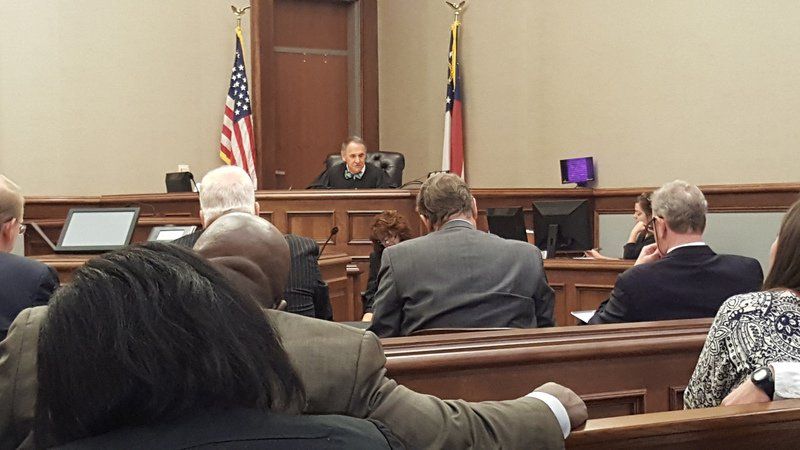Lowndes to focus on land zoning concerns
Published 4:41 am Tuesday, December 6, 2005
VALDOSTA — Adopted more than 20 years ago, the Lowndes County Zoning Ordinance is expected to receive an overhaul to its land use regulations. Of the dozens of zoning districts, residential uses is one that has been closely looked at among developers, Realtors, county commissioners and consultants.
Current residential uses call for a minimum lot size of 10,000 square feet to five-acre tracts depending on its zoning classification.
To update these standards, Lowndes County has been working with consultants from the Gail Easley Firm as they hold a number of workshops for citizens and developers. With the next workshop session scheduled for 6 p.m. tonight at the Lowndes County Administration Building, here is a look at recent developments with the unified land development code.
Current Residential Zoning Rules
Of recent interest has been residential zoning districts, particularly agricultural use, which requires a five-acre tract minimum lot size for residential uses. Lowndes County’s Zoning Ordinance defines the A-U district as “areas being protected from the effects of residential development and from the encroachment of those uses which are incompatible with a desirable agricultural environment.”
Other zoning districts for residential use, includes suburban agriculture that has a one-acre minimum lot size; single-family residential (R-1) with a one-acre minimum; single-family residential (R-15) with a minimum lot size of 15,000 square feet; and single-family residential (R-10) that has 10,000 square feet as the minimum lot size.
Proposed District Standards
During last month’s workshop, Easley introduced a number of proposed zoning district standards that addressed changes to some rural and residential districts.
For rural zoning districts, agricultural use would undergo a name change to estate agricultural that would include primarily agricultural activities, single-family homes and accessory uses. The district would still include a five-acre tracts.
Meanwhile, a proposed zoning district for residential agricultural would include three-acre tract minimums for land that is defined as mixed agricultural and residential.
For residential, proposed district standards included one-acre minimum for low-density residential (R-1); 21,780 square feet for medium-density residential (R-21) and 10,000 square feet for suburban-density residential (R-10).
The workshops for citizens, which will be held throughout the next few months, recently included Realtors and developers who said they would like to see the five-acre tract minimum in agricultural use changed.
Requested changes
Barbara Barker, of the Board of Realtors, said the five-acre tract minimum in A-U for a single-family dwelling should be changed to two acres on an existing road and one acre for a new road. Barker approached Lowndes County Commissioners with this request after the Gail Easley Firm began working on the land use changes. However, the workshops have allowed Realtors, developers and citizens to bring their concerns to the firm and county.
“The main thing that we’re looking at is trying to get more affordable housing in the county,” Barker said. “With the price of land in the county, it just makes it unfeasible for a lot of people to afford five-acre tracts and then to be able to build a house on it.”
Jimmy Sublett, president of the Home Builders Association, added that developers are mostly looking for smaller lot sizes in A-U zoning without having to go through a lot zoning process. Besides the cost, Sublett said the current five-acre minimum is restrictive due to the maintenance involved.
“Basically when you have older retired people or young couples they don’t want to have to keep up five acres of land,” Sublett said.
Anne-Marie Wolff, associate planner for the South Georgia Regional Development Center, said the consultants aren’t proposing any changes to the minimum lot sizes for A-U zoning. However, she added that the Easley firm is proposing a new zoning district that will have three-acre minimum lot sizes under residential-agriculture.
Subdivisions and rural land
With the Lowndes County Greater Comprehensive Plan under way simultaneously with the unified land development code, Wolff said these will guide the city’s growth while protecting rural parts of the county from over development.
“The county encourages growth to occur in an increment fashion,” Wolff said. “In order to help guide that growth, they have water and sewer plans for where they would like to see development.”
Wolff added that an applicant can always come forward to ask for property to be rezoned, however to prevent over development in rural parts of the county there’s not always room for changing existing zoning.
Sublett said the key for developers is to not have to go through a lot zoning process, adding that there should be some protection of farm land.
“There’s going to have to be some guidelines even on farm land to put a subdivision,” Sublett said. “There needs to be a check and balance system for development in rural land to protect some farm land.”
By changing the residential zoning ordinances, Wolff said subdivisions would not be allowed to be built on farm land without having the property rezoned.
However, Barker said the Board of Realtors has no interest in changes for subdivision, but rather just for single-family residential uses.
“We’re not asking for anything to be done with the subdivisions,” Barker said. “We’re asking for county commissioners to look at ways single-family homes can be built with less than five acres in the county.”
By changing the A-U five-acre minimum, Barker said farmers would have the opportunity to sell land if they choose.
“Farming is not the most productive industry in the county right now. Sometimes farmers need to sell an acre or two-acre tract, but they can’t even do that,” Barker said.
Barker added that the Board of Realtors isn’t trying to override county commissioners, but rather make development possible.
“We’re trying to help the integrity of the county,” Barker said.
Resolving the issues
With the Gail Easley Firm and Lowndes County working to replace the land use regulations, Wolff said the workshops held throughout the next few months will be open to the public for input. In addition, Wolff said lowndescounty.com contains information on the unified land development code and is updated to preview upcoming workshops.
“If the average citizen wants to come and find out about the process they’re welcome,” Wolff said.
After attending last month’s workshop, Barker said the Gail Easley Firm seems to be open to listening to issues regarding zoning.
“I was very impressed with Gail’s openness to us,” Barker said. “We’re just appreciative of the fact that she has given us the opportunity to present to her what is needed in Lowndes County. Nobody is trying to do this to satisfy our sales, we’re trying to help the people in the city wanting to move to the county who can’t afford five-acre tracts.”
Whether the land issues are resolved, Sublett said, depends on the firm’s experience.
“It’s according to how successful they’ve been in other areas,” Sublett said. “If the exact format in other places is applicable to what we’re wanting, then sure it will help.”





